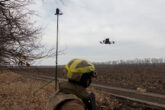May 15, 2018
What's Wrong with the Defense Department's 2019 Budget Request - and What Congress Can Do to Fix It
The Trump administration had a rare opportunity in the 2019 planning and budgeting cycle. For most of its time in office, the Obama administration requested more for defense than Congress appropriated, and as a result was forced into a series of unstrategic austerity measures, the effects of which are not yet fully appreciated. Conversely, the Trump administration arrived in power when Congress was in a spending mood, creating space to both set a new strategic direction and actually implement the strategy with new resources. The budget request for fiscal year 2019 was the first one prepared entirely by the new administration, guided by its National Security Strategy and National Defense Strategy , along with a large influx of cash for the Department of Defense – about $40 billion above the administration’s fiscal year 2018 request. The strategy boldly emphasized strategic competition with China and Russia, so one would expect a budget that emphasizes the advanced capabilities required to retain the U.S. technological edge against those competitors – things like electronic warfare capability, advanced munitions, and artificial intelligence. Instead, the administration submitted a budget request that, with a few notable exceptions, invests heavily in legacy systems, many of which have already been in service for decades, such as the Abrams tank, the Super Hornet fighter jet, and the Apache helicopter.
Thus, the Trump administration has missed its best chance to reshape the force in accordance with the strategy, and it will not get another opportunity like the one it had in the 2019 planning cycle. Building both a new strategy and a first budget request concurrently in the first year of an administration is always challenging. However, given the additional funds the department received this year, the 2019 cycle was the best opportunity to apply those new funds to the administration’s new priorities. And there is no more new money coming
Read the Full Article at War on the Rocks
More from CNAS
-
Defense / Transatlantic Security
When Defense Becomes Destruction: Austria-Hungary’s Mistake and Ukraine’s RiskThis article was originally posted on War on the Rocks. The southeastern Polish city of Przemyśl, with its elegant 19th century Habsburg-era train station, remains one of the ...
By Franz-Stefan Gady
-
Defense / Transatlantic Security
Ukraine’s Catch-22 MomentThis article was originally published in the Financial Times. In Joseph Heller’s wartime classic, Catch-22, the protagonist Yossarian seeks out the US army surgeon Doc Daneeka...
By Franz-Stefan Gady
-
CNAS Insights | Budgetary Own Goals Undermine “Speed and Volume”
On November 7, Secretary of Defense Pete Hegseth laid out a plan to overhaul the Department of Defense’s (DOD’s) acquisition system. Placing an emphasis on delivering new capa...
By Philip Sheers, Carlton Haelig & Stacie Pettyjohn
-
Drones: Who Is Making the New Weapons of War?
From Ukraine and Russia to Gaza and Sudan, drones have become a key weapon of war. Which companies are making them, and profiting from this rapidly expanding but controversial...
By Stacie Pettyjohn




